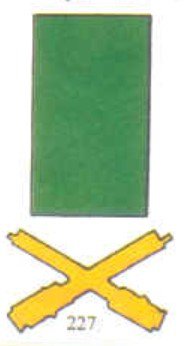
14th Machine Gun Company
Off to War
The 14th Machine Gun Company departed Egypt in two groups during June 1916. The first included men from earlier reinforcements; the second, which contained the majority of the unit, embarked on 19 June aboard HMT Canada. They reached Marseille on 25 June and began a gruelling 60-hour train journey through the French countryside to Thiennes, a small town about 30 kilometres from Fromelles. Soldiers noted the warmth of the French welcome along the route, with one diary remarking that their “reputation had evidently preceded them.”
After a short period of rest and reorganisation, the company was billeted at Sailly-sur-la-Lys by 10 July, only a short distance behind the front lines. On 16 July, they moved into forward positions near Pinney’s Avenue, a narrow communication trench that led towards the Australian front line opposite the Sugar Loaf salient — a heavily fortified German position bristling with machine guns that dominated the surrounding ground.
The attack was originally scheduled for 17 July but heavy rain and deteriorating conditions forced a postponement. On the night of 18 July, British and Australian artillery commenced a fierce bombardment of the German lines, met by heavy retaliatory shelling that caused casualties and damaged forward positions.
Battle of Fromelles
In the battle plan, the 14th MGC was tasked with supporting the 5th Australian Division’s infantry assault by delivering both direct and indirect fire, cutting down enemy reinforcements, and protecting captured ground from counterattack. The company was equipped with the Vickers Medium Machine Gun — a highly effective but cumbersome weapon weighing over 45 kilograms with its tripod and water cooling system, requiring a crew of three.
The Vickers was ideally sited in a prepared position to deliver plunging fire deep into enemy lines, but at Fromelles the plan required guns to be moved forward with the infantry assault to establish advanced firing positions. This meant crews had to carry the weapon, ammunition boxes, and water containers across open ground under heavy fire.
“The gun has a crew of three. It was not easily portable and was preferably sited in a prepared fixed position… it was a target for the enemy, it was heavy and it had to be moved forward as needed while under fire, exposing the machine gun crews.”
— Virtual War Memorial Australia – Steve Larkins
19 July 1916 – At 5.43 PM, four waves of infantry began moving from the Australian front line into No-Man’s-Land, where they lay waiting for the artillery barrage to lift. Ten guns from the 14th MGC followed in support. At 6.00 PM, the barrage lifted and the infantry surged forward. In some sectors the first German trench line was taken, and the Australians pressed on to the second line.
Machine gun sections moved up in stages, some setting up in captured enemy trenches, others attempting to establish forward firing positions on the flanks. Every movement drew immediate enemy attention from the Sugar Loaf and from artillery batteries further to the rear. Crews worked their guns to the limit, firing until barrels overheated or ammunition ran low.
Night of 19/20 July – Throughout the night, the 14th MGC maintained covering fire for isolated parties holding captured trenches. Communication was difficult and resupply was hazardous. Several gun teams were cut off, overrun, or forced to abandon their positions under fire.
20 July 1916 – By dawn, the Australians had been driven back to their original lines. No-Man’s-Land was strewn with casualties, and the company’s losses reflected the vulnerability of machine gun crews advancing in the open under concentrated fire. Fromelles would remain one of the costliest and most tragic actions in which the 14th MGC ever served.